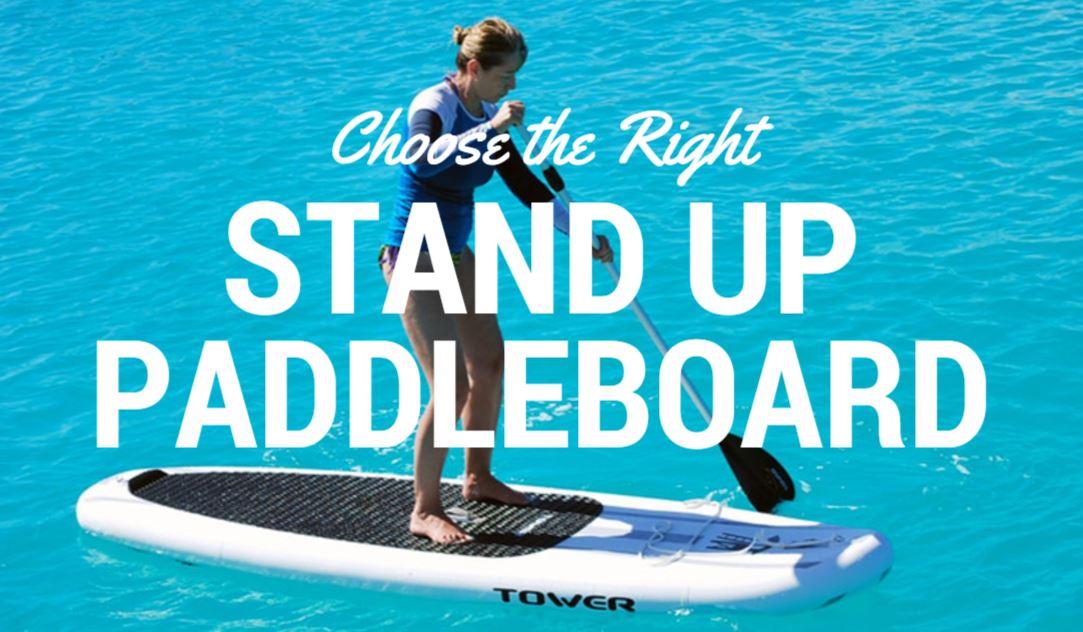
SEVEN THINGS TO CONSIDER BEFORE BUYING A STAND-UP PADDLE BOARD
For those interested in a great total body workout, a relaxing stroll through new scenery, or if you just love being out on the water stand up paddle boarding may be the perfect sport for you. While not as demanding as surfing big waves, but also providing more freedom and movement than being locked into a kayak, stand up paddle boarding is a perfect balance between an active workout and a relaxing day on the water. Before you rush out and buy the first thing you see, here are seven things to consider before buying a stand-up paddle board.
1. BOARD TYPE
There are four main categories when it comes to stand-up paddle boards: race, touring, surf, and all around. Race style boards are designed to be fast and cover large distances. Those interested in racing will need fast and efficient boards. Touring boards are similar to race in that they are made for covering large distances, but speed is not as important. Surf style boards are made for catching waves where maneuverability is important, but long distance riding isn’t. All around boards are a balance between all of the above factoring in speed, maneuverability, and stability. Knowing what performance aspects you require at your waterfront location will help you choose the best board for your purpose, otherwise, all around boards are a great intro to the sport.
2. HULL TYPE
All the different board types fall into two main categories of hulls: planing hulls or displacement hulls. Planing hulls are flat and wide, with large noses, designed to get you on top of the water and riding. These wide hulls often provide greater stability but are slightly slower in the water. Displacement hulls are perfect for racing or paddling long distances. These hulls have pointed noses designed for cutting through the water to improve efficiency of movement. Displacement hulls are usually longer and narrower than planing hulls making them excellent for speed, but slightly harder to balance.
3. THICKNESS AND VOLUME
Board volume is measured in liters, the larger the volume the more water the board displaces and the more weight it can support. A short wide board can have the same or greater volume than a long narrow board. Board thickness will greatly impact the amount of water the board displaces. Be sure to buy a board large enough to hold your weight or you may find yourself paddling underwater instead of on top of it.
4. LENGTH AND WIDTH
Board length is generally dictated by the purpose of the rider. Short boards are usually under 9 FT long and are great for surfing as the shorter board is easier to maneuver. Racing boards can be longer than 14 FT as the long narrow boards cut through the water and maintain forward speed with less drag. All around boards are usually around 10-11 FT and are great for calm lakes and can even be used in the surf.
Paddleboard width varies between 29″ to upwards of 34″. Wider boards are more stable and easier to balance. Narrower boards are faster and can cut through the water more efficiently.
5. INFLATABLE BOARDS
When considering board length do not forget about storage and transport for your paddle board. It can be tricky fitting huge 14 FT boards on top of a small car or in an elevator to get back to your apartment. Inflatable boards are a great option for those with transport or storage issues. These boards are made of highly durable materials and can be pumped up with air to reach full size and strength.
6. BOARD MATERIALS
One of the largest factors in board price is the material of the board. Boards are most commonly made from EPS foam which is wrapped in epoxy or fiberglass for exterior strength. Hollow core boards are usually cheaper and made from plastic, however, high-end hollow core boards do exist and are designed to reduce weight and increase performance. Polyurethane is heavier than EPS foam and often used for beginner boards. Inflatable boards are usually made of PVC with a stitched core of air pockets.
7. FINS
Fins are used to give the board stability and allow the rider to hold a direction. There is a multitude of fin setups for paddle boards to fit every need. A large single fin is the simplest design for all around use. A three fin setup, also known as a thruster, provides excellent movement in a straight line and fairly good control on waves. Race fins are long and straight providing speed and control on downwind runs. Generally speaking, longer fins help with tracking but reduce maneuverability and can catch on the bottom in shallow water.
FINAL THOUGHTS
There are tons of different paddle boards out there. After you decide on the style of riding you want to do, check out our other paddle board reviews and you will be ready to make your first purchase!
Re-posted by Scott Freerksen “The Lake Guy”…original article here… by
